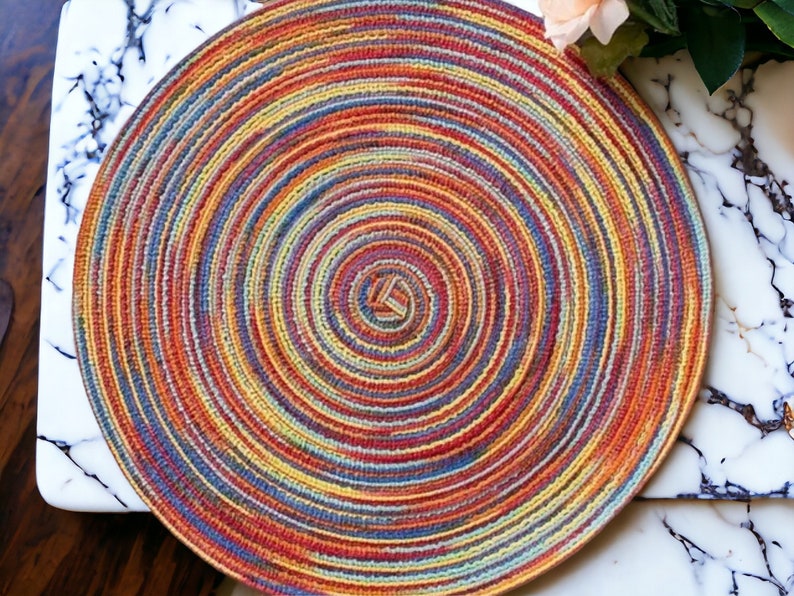News
The Timeless Appeal of Environmentally Friendly Linen Round Placemats
Introduction
In the realm of home dining and interior design, trends continuously evolve, yet certain elements maintain their enduring charm. One such element is the round placemat made from environmentally friendly linen fabric, a product that combines elegance with sustainability. These placemats seamlessly fit into various dining settings, from traditional family tables to modern, minimalist arrangements. Their timeless appeal stems not only from their aesthetic beauty but also from their durability, cultural significance, and the rich heritage of linen craftsmanship.
The History of Linen in Table Settings
Linen has been a cherished material for table settings for centuries, valued for its versatility, strength, and natural beauty. The art of crafting linen textiles dates back to ancient civilizations, where skilled artisans transformed flax fibers into luxurious fabrics used for both functional and decorative purposes. Whether in European households during the Renaissance, where finely woven linen adorned grand dining halls, or in Asian cultures where linen plays a vital role in traditional ceremonies, linen has always held a special place in dining traditions worldwide.
The Craftsmanship Behind Linen Round Placemats
The allure of environmentally friendly linen round placemats lies in the meticulous craftsmanship involved in their creation. Unlike mass-produced tableware, these placemats require hours, sometimes days, of careful work by skilled artisans. Every detail is thoughtfully considered, from the selection of the finest linen to the precise stitching and finishing touches.
Choice of Linen
The first step in creating a high-quality linen placemat is selecting the right type of linen fabric. Natural linen is preferred for its durability, heat resistance, stain resistance, and eco-friendly properties. Each type of linen offers unique benefits, such as softness, absorbency, and strength, ensuring that the placemats are not only beautiful but also practical for everyday use.
Design and Crafting
Once the linen is selected, the design process begins. Some placemats feature simple, elegant patterns, while others boast intricate designs with elaborate details. These designs may draw inspiration from various cultural influences, such as traditional motifs, geometric shapes, or natural elements. For example, Scandinavian designs often emphasize minimalism and clean lines, whereas Mediterranean styles may incorporate vibrant patterns and rich textures.
The crafting process is labor-intensive and demands a high level of skill. Artisans use specialized sewing techniques to shape the linen and create durable, aesthetically pleasing placemats. Every stitch, fold, and hem is executed by hand, ensuring that no two placemats are exactly alike. This uniqueness is a key reason why environmentally friendly linen round placemats are highly valued.
Finishing Touches
After the sewing is complete, the placemats undergo a finishing process. This may involve ironing to achieve a smooth texture, applying natural dyes or treatments to enhance color and durability, and sometimes adding decorative elements such as embroidery or appliqués. These finishing touches not only elevate the visual appeal of the placemats but also ensure their longevity and ease of maintenance.
Cultural Significance and Styles
Environmentally friendly linen round placemats are more than just functional table accessories; they often embody cultural significance and reflect the artistic traditions of the regions where they are made. Different cultures have developed their unique styles of linen crafting, each with its own symbolism and meaning.
Scandinavian Minimalism
In Scandinavian countries, linen placemats are celebrated for their minimalist design and functionality. Emphasizing simplicity and practicality, these placemats often feature neutral colors and subtle patterns, creating a serene and inviting dining atmosphere.
Mediterranean Vibrancy
Mediterranean-inspired linen placemats are known for their vibrant colors and intricate patterns. Drawing from the rich cultural heritage of regions like Italy and Greece, these placemats often showcase floral motifs, geometric designs, and bold hues that add a lively touch to any dining setting.
Traditional Asian Influences
In Asian cultures, linen placemats may incorporate traditional motifs and craftsmanship techniques. For instance, Japanese-inspired placemats might feature delicate embroidery or subtle patterns that reflect the beauty of nature, while Indian-inspired designs may include intricate patterns and vibrant colors that symbolize various cultural elements.
Why Choose Environmentally Friendly Linen Round Placemats?
In a market dominated by mass-produced tableware, owning a piece of handcrafted linen placemats offers a unique and meaningful choice. Environmentally friendly linen round placemats provide several advantages that set them apart from their machine-made counterparts.
Uniqueness and Character
One of the most appealing aspects of linen placemats is their uniqueness. Each piece is handcrafted with attention to every detail, ensuring that no two placemats are identical. This means that when you invest in linen placemats, you are purchasing a one-of-a-kind item that reflects the artistry and skill of the craftsman.
Durability and Longevity
Linen is renowned for its durability and longevity. High-quality linen placemats are designed to withstand daily use, becoming cherished pieces that can be passed down through generations. Unlike other materials that may wear or tear over time, linen only becomes more beautiful with age, developing a rich texture that enhances its charm.
Aesthetic Appeal
Linen round placemats can transform the look and feel of your dining area, serving as the focal point of the table. Whether you prefer a classic, rustic style or something more contemporary and sleek, there is a wide range of designs to choose from. The natural beauty of linen, combined with intricate craftsmanship, creates a sense of warmth and elegance that is difficult to achieve with other materials.
Sustainability
For the environmentally conscious, linen placemats are a sustainable choice. Many artisans use linen that is responsibly sourced, and the crafting process is often more eco-friendly than mass production methods. Additionally, linen is a biodegradable material, making it a more sustainable option compared to plastic or synthetic alternatives.
Conclusion
The timeless appeal of environmentally friendly linen round placemats lies in their harmonious blend of beauty, craftsmanship, and cultural significance. These placemats are not merely functional table accessories; they are works of art that can elevate your dining experience and add a touch of elegance to any home. Whether you are drawn to the minimalist designs of Scandinavian styles, the vibrant patterns of Mediterranean influences, or the intricate craftsmanship of traditional Asian techniques, linen round placemats are an investment in both quality and artistry that will endure through the ages.
Enhance your dining experience with environmentally friendly linen round placemats.

